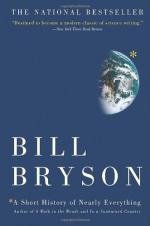|
This section contains 716 words (approx. 2 pages at 400 words per page) |

|
Part 3, Chapter 8 Summary and Analysis
One of the most amusing stories involving a scientific career involves Max Planck, who in 1875 was wavering between a career in math or in physics. He was advised not to choose physics, because all the important discoveries had already been made. Fortunately, Planck ignored the advice and ultimately did much work on entropy, for the age of quantum theory, the idea that energy is not continuous but divided into tiny packets called quanta, still lay ahead.
A series of papers by an unknown Swiss patent clerk began the new age in 1905. The young man had no university affiliation and no lab access. His papers seemed to contain pure, original thought, with no footnotes or citations, almost no math and no references to previous work. This amazing scientist, Albert Einstein, suggested that mass and energy were actually the same thing...
(read more from the Part 3, Chapter 8 Summary)
|
This section contains 716 words (approx. 2 pages at 400 words per page) |

|




